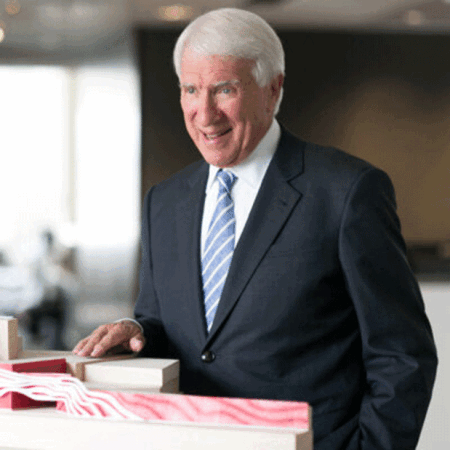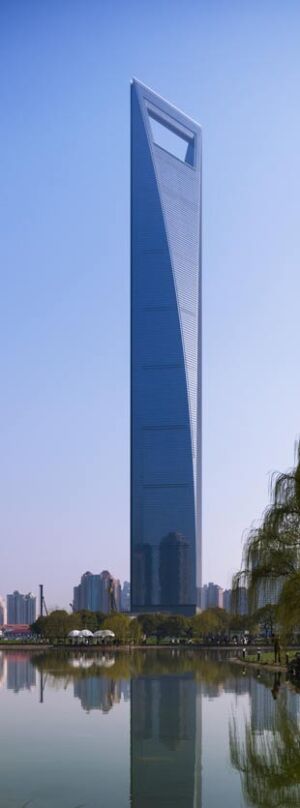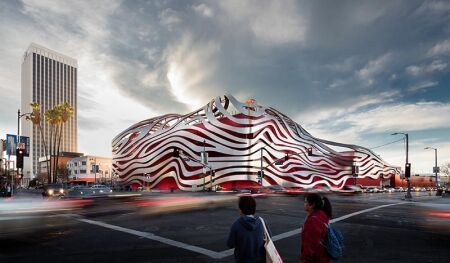A. Eugene “Gene” Kohn, one of the founding members of the global architecture firm Kohn Pedersen Fox (KPF), has died at 92 after a yearlong battle with cancer. The New York–based architect helped launch KPF in the mid-1970s and, along with his partners, William Pedersen and Sheldon Fox, grew the firm into an international architectural powerhouse over the next several decades.
In his long tenure with KPF, Kohn’s firm designed some of the most famous skyscrapers in the world, including New York City’s Hudson Yards development; the World Bank headquarters in Washington, D.C.; 333 Wacker Drive in Chicago; London’s Covent Garden; the Shanghai World Financial Center; Hong Kong’s International Commerce Centre; and most recently, the Manhattan office tower One Vanderbilt. As of earlier this month, the firm has designed more than 250 towers around the world, including buildings that count among the tallest, according to the New York Times.
Kohn taught at Columbia University and Harvard University, while also remaining highly involved with his alma mater, the University of Pennsylvania. He won numerous awards over the course of his 60-year career, including the National Building Museum Chairman’s Award; the Skyscraper Museum Award; the Soane Foundation Honors; and the Alumni Award of Merit by the University of Pennsylvania, the highest award presented to alumni. He also received the Wharton Real Estate Center’s Lifetime Achievement Award; the University of Pennsylvania–PennDesign Dean’s Medal of Achievement, the highest honor given by the institution; and the Ellis Island Medal of Honor. In 2019, he received the Kanter Tritsch Medal for Excellence in Architecture and Environmental Design, which honors architects who have changed the course of design history.
Earlier this year, Kohn was the first architect to be named a ULI Life Trustee by the ULI Global Governing Trustees. He first became a member of ULI in 1982 and served as a jury member and chair for many ULI competitions, including the Hines Student Competition, Americas Awards for Excellence, and ULI Prize for Visionaries in Urban Development. In addition to being a ULI Life Trustee, Kohn was also a ULI Foundation Governor and donated generously to the ULI Foundation for more than 30 years. KPF said earlier this year it is contributing $1 million to endow the annual A. Eugene Kohn/KPF Fellowship, which will fund research on low-carbon design and other activities in the ULI Randall Lewis Center for Sustainability in Real Estate. Those looking to support the fund and honor Kohn’s enduring legacy can make a gift here.
“Gene was universally respected in the community for his ability to achieve consensus,” said James von Klemperer, KPF President, in a press release. “His seemingly limitless interest in other human beings gave him powerful insights into the social aspect of building programs and larger urban agendas. Without his easy charm and focused intensity, such notable projects as Roppongi Hills in Tokyo, the World Bank in Washington, D.C., One Vanderbilt in New York, and the reinvigoration of Covent Garden in London would not have realized their full success.”
After the launch of KPF in 1976, the firm grew exponentially in its first decade, from four founding partners to a staff of 160 by 1986. The New York Times described the firm’s work that year as “an urbane blend of contemporary and classical elements that enthusiastically exploit architecture of the past.”
Kohn was also a published author. In 2019, he published his memoir The World by Design, in which he detailed his early beginnings and rise to success in the architecture and design world and shared wisdom on business leadership and insight into his firm’s approach to innovation.
“Gene Kohn made compelling, long-lasting contributions to not just our industry, but to the skylines of major cities across the world over a career that spanned eight decades,” said Emily Grandstaff-Rice, FAIA, AIA President. “He served as President of AIA’s New York City chapter and in 1990 won AIA’s prestigious Firm Award. His outstanding career as a celebrated architect will long be remembered.”
Kohn, born in 1930, was raised in Philadelphia and later attended the University of Pennsylvania, where he earned both bachelor’s and master’s degrees. He received a Theophilus Parsons Chandler Architecture Fellowship for advanced study and travel abroad. During his time in graduate school, Kohn studied under Louis Kahn, widely thought of as one of the greatest architects of the 20th century. Kohn, who credited Kahn as one of his biggest mentors, discussed in a 2019 ArchDaily podcast how exciting it was to be in classes taught by Kahn and how he was “hypnotized” hearing him speak. “You didn’t move because you had to listen to every word he said, and it was so inspiring,” Kohn said.
Between his B.A. and M.A. degrees, he served in the U.S. Navy on active duty for three years and for five years on reserve duty, retiring as a Lieutenant Commander. Kohn’s love of art and his creative nature were attributed to his mother, Hannah Kohn, who he said inspired his career as an architect. Kohn is survived by his wife Barbara, sons Steven and Brian, and nine grandchildren.








